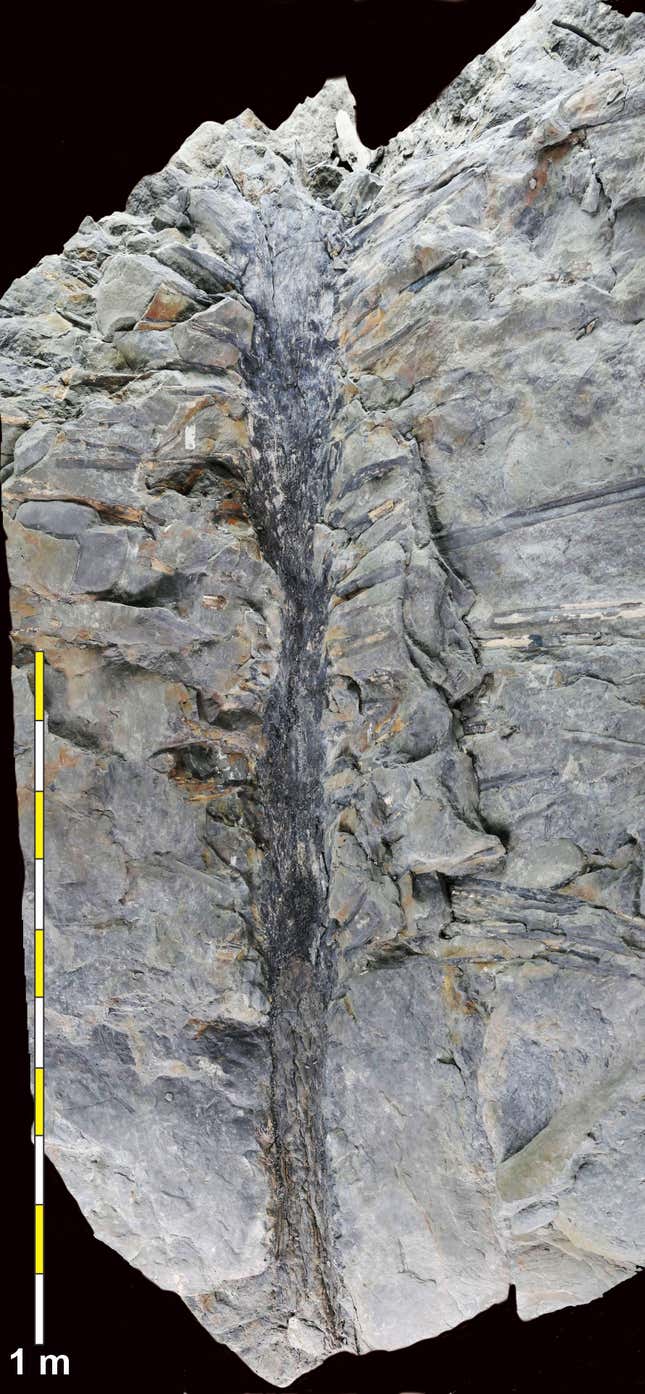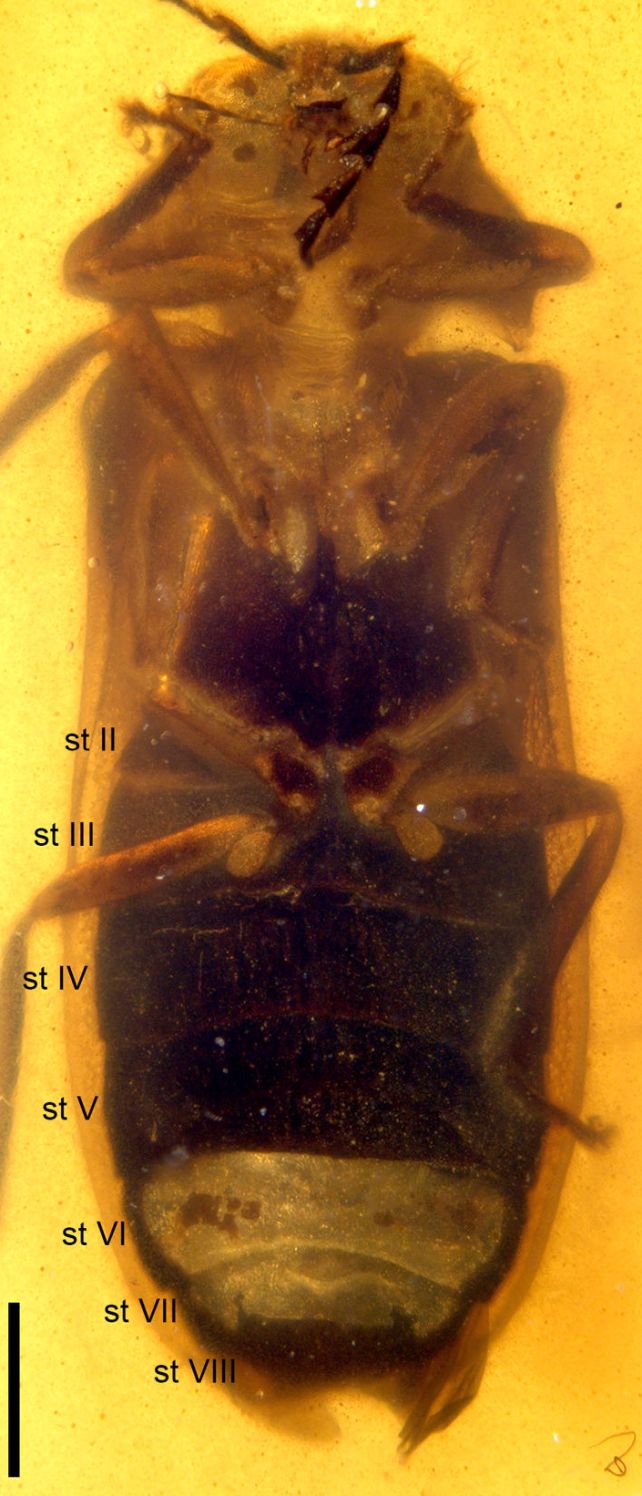 An illustration of the specimen (with simplified leaves), human silhouettes for scale.Illustration: Tim StonesiferA team of scientists has come across a 350-million-year-old fossil tree species that resembles something out of a Dr. Seuss book.
An illustration of the specimen (with simplified leaves), human silhouettes for scale.Illustration: Tim StonesiferA team of scientists has come across a 350-million-year-old fossil tree species that resembles something out of a Dr. Seuss book.
Drought and Christmas Trees | Extreme EarthThe fossils are among the earliest-known trees and were unearthed in what used to be an ancient lake in northeastern Canada. Named Sanfordiacaulis densifolia, the species would have coexisted alongside taller trees in the forest canopy. While the oldest fossil trees date back to the late Devonian Period, these ones from the early Carboniferous are only a few million years younger. It remains unclear where Sanfordiacaulis stands on the tree of life, making it an enigmatic taxa.Dr. Seuss’ Truffula trees may have been inspired by a cypress tree that died in 2019, but these real-life trees could be even more alien. The research documenting the ancient plant life from leaf to trunk is now published in Current Biology. A fossil of the 350-million-year-old tree.Photo: Matthew Stimson“Each leaf is estimated to have grown at least another meter before ending,” stated Robert Gastaldo, the lead author of the study and a paleontologist at Colby College, in a Cell release. “This means that the ‘bottle brush’ had a dense canopy of leaves that extended at least 5.5 meters (or 18 feet) around a trunk that was non-woody and only 16 centimeters (or 0.5 feet) in diameter. Quite astonishing.”The ancient trees in New Brunswick were preserved after an earthquake pushed foliage on the lake’s edge into the water, submerging the trees into the lakebed. The recent paper delves into the most complete of five tree specimens preserved in sandstone and siltstone at the ancient lake site, now a quarry.Based on the tree’s shape—with a massive canopy in proportion to its size—the researchers concluded that Sanfordiacaulis maximized its growth by capturing light from the surrounding greenery. The fossils indicate that the tree could accommodate around 250 leaves around its trunk, each extending nearly 6 feet (1.75 meters) from the trunk.“The history of life on land consists of plants and animals that differ from any living ones,” stated Gastaldo. “Evolutionary mechanisms at play in the distant past led to organisms that thrived over long periods, but their shapes, forms, growth patterns, and life histories followed different paths and strategies. Rare and peculiar fossils, such as the New Brunswick tree, are just one example of what inhabited our planet but turned out to be an unsuccessful experiment.”More: See Nature Way Up-Close in These Award-Winning Photographs
A fossil of the 350-million-year-old tree.Photo: Matthew Stimson“Each leaf is estimated to have grown at least another meter before ending,” stated Robert Gastaldo, the lead author of the study and a paleontologist at Colby College, in a Cell release. “This means that the ‘bottle brush’ had a dense canopy of leaves that extended at least 5.5 meters (or 18 feet) around a trunk that was non-woody and only 16 centimeters (or 0.5 feet) in diameter. Quite astonishing.”The ancient trees in New Brunswick were preserved after an earthquake pushed foliage on the lake’s edge into the water, submerging the trees into the lakebed. The recent paper delves into the most complete of five tree specimens preserved in sandstone and siltstone at the ancient lake site, now a quarry.Based on the tree’s shape—with a massive canopy in proportion to its size—the researchers concluded that Sanfordiacaulis maximized its growth by capturing light from the surrounding greenery. The fossils indicate that the tree could accommodate around 250 leaves around its trunk, each extending nearly 6 feet (1.75 meters) from the trunk.“The history of life on land consists of plants and animals that differ from any living ones,” stated Gastaldo. “Evolutionary mechanisms at play in the distant past led to organisms that thrived over long periods, but their shapes, forms, growth patterns, and life histories followed different paths and strategies. Rare and peculiar fossils, such as the New Brunswick tree, are just one example of what inhabited our planet but turned out to be an unsuccessful experiment.”More: See Nature Way Up-Close in These Award-Winning Photographs
Unearthing Bizarre Fossil Trees in Canada: ‘Unlike Any Living Ones’














